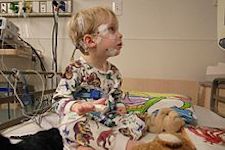Elaine Cox, M.D., writes in USNews & World Report that to “accomplish this task, they completely destroyed the previous box and built a new one with three radical foundations: agreement to have no competition regarding patient safety; complete transparency in data sharing around safety; and adoption of an ‘all teach all learn philosophy.”’
Thus the Ohio Children’s Hospitals’ Solutions for Patient Safety network was born.
“In two years,” she wrote, “the project had garnered such great results in its home state that the team was asked to lead a national effort in pediatric patient safety. That year, they brought in 25 additional hospitals. Within a year, the collaborative, now simply known as SPS, grew to 78 hospitals in 33 states and the District of Columbia. Now at 88 hospitals, the collaborative can boast of a membership of nearly every children’s hospital in America.”
Dr. Cox notes (in partial reference to cost issues), that “Nearly 55 percent of children are on Medicaid and the reimbursement is generally less than 25 cents on the dollar. In similar circumstances, corporations would be guarding their data and innovations with every means possible. After all, no money no mission. And yet, SPS shares all. Why? Because in this case, the mission means more than the money.
“The major premise behind the efforts of SPS is to build children’s hospitals as high-reliability organizations, or HROs, similar to the nuclear and aviation industries. These are groups that operate under extremely high-risk situations but have less than their expected number of adverse events. ”
“The work of the collaborative has been focused in two major areas: reducing hospital acquired conditions (HACs)…. and transforming hospitals into places that uphold a culture of safety that permeates every aspect of care, well beyond the bedside in fact. The HAC work has centered on standardizing processes put in place to guide care. Much of this work has involved the ‘bundle concept’ – small interventions that when used together can have a major impact in preventing the common ways patients are harmed in hospital settings – such as infections, adverse drug events, falls, pressure ulcers and blood clots. The culture of safety work includes classes on error prevention and eight easy tools to decrease errors in less than five minutes a day.”
Good models for adult care, too!
|
Ads by ZINC
|




